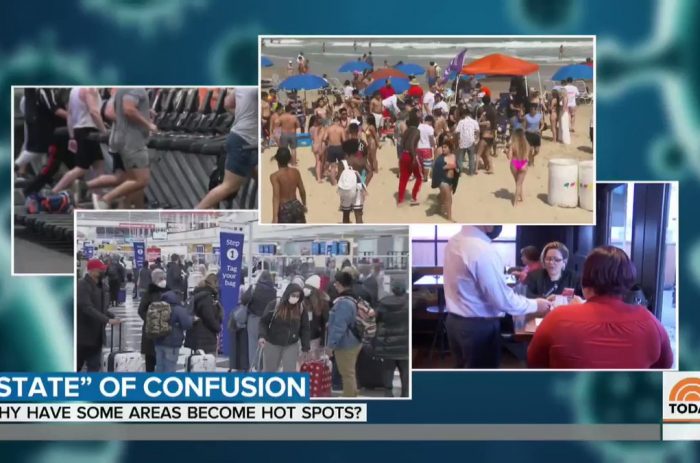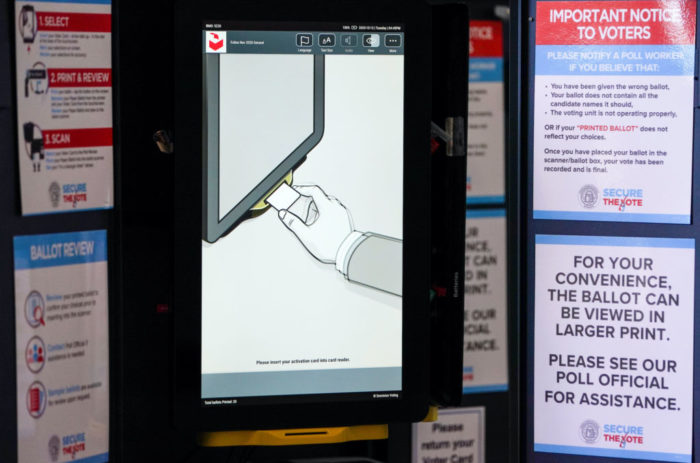redo Jump to...
print Print...
Directions
-Read the excerpt below from Tom Blumer's post at Newsbusters.
-Read "Types of Media Bias" in the right column. Then answer the questions.
From a post by newsbusters’ Tom Blumer (original post date 11/6/12):
In early October…the organizations which conduct exit polling disclosed that they will no longer attempt to [cover] the country, and will devote more effort to early voters. The Washington Post reported:
Breaking from two decades of tradition, this year’s election exit poll is set to include surveys of voters in 31 states, not all 50 as it has for the past five presidential elections, according to multiple people involved in the planning.
Dan Merkle, director of elections for ABC News, and a member of the consortium that runs the exit poll, confirmed the shift Thursday. The aim, he said, “is to still deliver a quality product in the most important states,” in the face of mounting survey costs.
The decision by the National Election Pool* – a joint venture of the major television networks and The Associated Press – is sure to cause some pain to election watchers across the country. [*The National Election Pool is a consortium of American news organizations formed in 2003 to provide “information on Election Night about the vote count, election analysis and election projections.” Member companies consist of ABC News, the Associated Press, CBS News, NBC News, CNN and Fox News. The organization relies on the Associated Press to perform vote tabulations and contracted with Edison Media Research and Mitofsky International to “make projections and provide exit poll analysis.”]
Voters in the excluded states will still be interviewed as part of a national exit poll, but state-level estimates of the partisan, age or racial makeups of electorates won’t be available as they have been since 1992. The lack of data may hamper election night analyses in some states, and it will almost certainly limit post-election research for years to come.
A growing number of voters casting early ballots has added to the complexity of carrying out surveys in 50 states, the District of Columbia and nationally. In more and more states it has become crucial to supplement in-person precinct polling with relatively costly telephone interviews in order to achieve representative samples.
Here is a list of the states that will be excluded from coverage: Alaska, Arkansas, Delaware, District of Columbia, Georgia, Hawaii, Idaho, Kentucky, Louisiana, Nebraska, North Dakota, Oklahoma, Rhode Island, South Carolina, South Dakota, Tennessee, Texas, Utah, West Virginia and Wyoming.
The matter of which states were dropped and selected for continued inclusion is interesting, to say the least, especially when one looks at their 2008 presidential election status and the number of 2012 electoral votes involved. [The AP say they eliminated the 19 states from its exit polling efforts to cut costs. You’d think perhaps, “OK. Makes sense. We know exactly how the states with the largest populations, New York, California and Texas will vote anyway.” Of the 19 states the AP dropped, 16 were won by Republican presidential hopeful John McCain in 2008, while only 4 were won by Democratic candidate Barack Obama. Texas (McCain) is dropped. But New York (Obama) and California (Obama) remain.]
To accurately identify different types of bias, you should be aware of the issues of the day, and the liberal and conservative perspectives on each issue.
Types of Media Bias:Questions
1. There were few reports on the decision by the National Election Pool to drop 19 states from its exit polling. What type of bias did the media display by under-reporting this information to voters?
2. Do you think the AP and networks purposely chose a majority of Republican-leaning states to remove from its exit polling? Explain your answer. (If you answered no, why do you think the National Election Pool chose those particular states to drop from its exit polling? Coincidence, random, etc.?)
3. How might the elimination of a majority of red states from exit polls affect reporting on election results?
4. In this post, Mr. Blumer asks “Why exclude deep-red (Republican) Texas but not deep-blue (Democratic), heavily populated, and likely non-competitive California, Illinois, or New York? Do you think Mr. Blumer has a valid question? Explain your answer.
Scroll down to the bottom of the page for the answers.
Answers
1. The media displayed bias by omission and story selection by under-reporting the story on the AP’s elimination of 19 states from its exit polling.
2. Opinion question. Answers vary.
3. The elimination of a majority of red states from exit polls could skew the exit polling to make it appear as if President Obama has a huge lead over Republican challenger Mitt Romney; could give voters a distorted view of the actual election results.
4. Opinion question. Answers vary.



